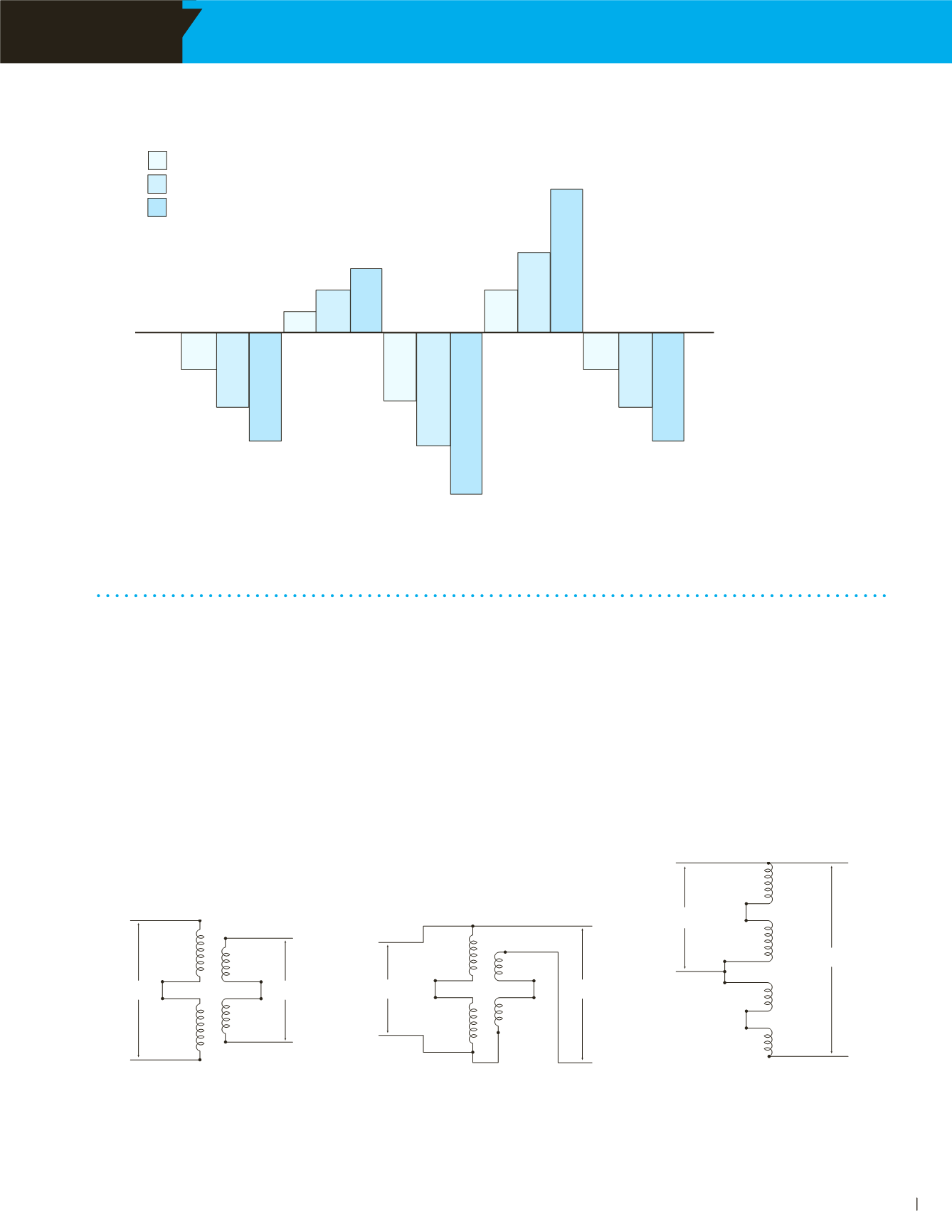
SECTION
BUCK-BOOST TRANSFORMERS
ACME ELECTRIC
•
MILWAUKEE, WI
•
800.334.5214
•
acmetransformer.com
89
1. What is a buck-boost transformer?
Buck-boost transformers are small single phase transformers
designed to reduce (buck) or raise (boost) line voltage from
5 -20%. The most common example is boosting 208 volts to
230 volts, usually to operate a 230 volt motor such as an air-
conditioner compressor, from a 208 volt supply line.
Buck-boosts are a standard type of single phase distribution
transformers, with primary voltages of 120, 240 or 480 volts
and secondaries typically of 12, 16, 24, 32 or 48 volts. They
are available in sizes ranging from 50 volt amperes to 10
kilo-volt amperes.
Buck-boost transformers are shipped ready to be connected
for a number of possible voltage combinations.
X1
X2
X3
X4
OUTPUT
H4
INPUT
H2
H3
H1
X1
X2
X3
X4
OUTPUT
H4
INPUT
H2
H3
H1
X1
X2
X3
X4
OUTPUT
H4
INPUT
H2
H3
H1
Questions & Answers About Buck-Boost Transformers
How Low Voltage Affects Various
Equipment Operations and Functions
150%
140%
130%
120%
110%
100%
90%
80%
70%
60%
50%
90
1
/
2
%
81%
72%
105%
111%
117%
84%
70%
57%
111%
123%
138%
90
1
/
2
%
81%
72%
Increase of Motor
Temperature and
Corresponding Insulation Life
Expectancy Loss
Increase of Motor Winding
Current Requirements in
Induction Motor Loads
Decrease in Motor Torque
Output
Decrease of
Incandescent
Lighting Output
Decrease of Heat Output in
Resistive Heating Loads
= 5% Low Voltage
= 10% Low Voltage
= 15% Low Voltage
Figure 1. Buck-boost transformer connected as a
low voltage insulating transformer (primary and
secondary windings shown series connected).
Figure 2. Same buck-boost transformer connected
as a boosting autotransformer. The connection from
H1 to X4 “converted” the unit to an autotransformer.
Figure 3. Illustration No. 2 shown with the primary
and secondary windings “straightened”.
2. How does a buck-boost transformer differ from an
insulating transformer?
A buck-boost transformer
IS
an insulating type transformer
when it is shipped from the factory. When it is connected at
the job site, a lead wire on the primary is connected to a lead
wire on the secondary – thereby changing the transformer’s
electrical characteristics to those of an autotransformer. The
primary and secondary windings are no longer “insulated”
and secondary windings are no longer “insulated” and its kVA
capacity is greatly increased. Refer to figures 1, 2 and 3.


